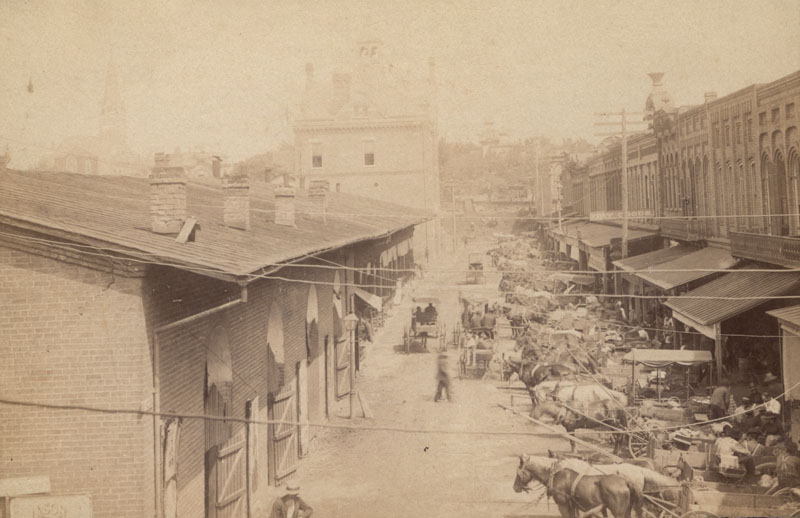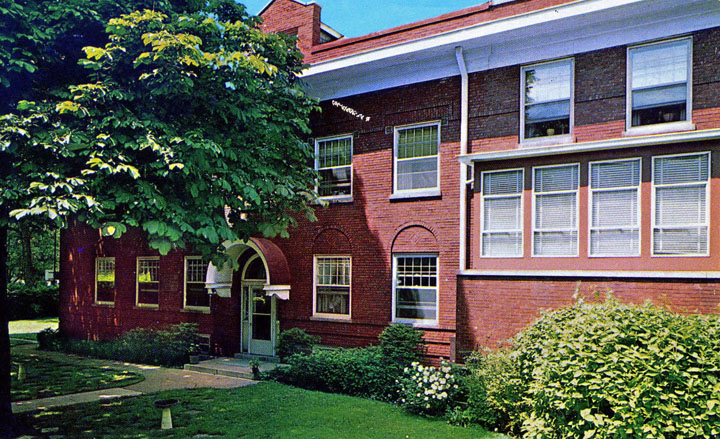|
Market Square, Knoxville
Market Square is a Historic districts in the United States, historic district and Pedestrian zone, pedestrian mall located in downtown Knoxville, Tennessee, Knoxville, Tennessee, United States. Established in 1854 as a market place for regional farmers, the square has developed over the decades into a multipurpose venue that accommodates events ranging from concerts to political rallies, and has long provided a popular gathering place for artists, street musicians, war veterans, and activists. Along with the Market House, Market Square was home to Knoxville's City Hall from 1868 to 1924. Market Square was listed on the National Register of Historic Places in 1984. Land for the market place was given to the city by William Graham Swan, William G. Swan and Joseph Alexander Mabry, Jr., Joseph A. Mabry. [...More Info...] [...Related Items...] OR: [Wikipedia] [Google] [Baidu] [Amazon] |
Knoxville, Tennessee
Knoxville is a city in Knox County, Tennessee, United States, and its county seat. It is located on the Tennessee River and had a population of 190,740 at the 2020 United States census. It is the largest city in the East Tennessee Grand Divisions of Tennessee, Grand Division and the state's List of municipalities in Tennessee, third-most populous city, after Nashville and Memphis, Tennessee, Memphis.U.S. Census Bureau2010 Census Interactive Population Search. Retrieved: December 20, 2011. It is the principal city of the Knoxville metropolitan area, which had a population of 879,773 in 2020. First settled in 1786, Knoxville was the first capital of Tennessee. The city struggled with geographic isolation throughout the early 19th century; the History of rail transportation in the United States#Early period (1826–1860), arrival of the railroad in 1855 led to an economic boom. The city was bitterly Tennessee in the American Civil War#Tennessee secedes, divided over the issue of sec ... [...More Info...] [...Related Items...] OR: [Wikipedia] [Google] [Baidu] [Amazon] |
Frances Willard (suffragist)
Frances Elizabeth Caroline Willard (September 28, 1839 – February 17, 1898) was an American educator, temperance reformer, and women's suffragist. Willard became the national president of Woman's Christian Temperance Union (WCTU) in 1879 and remained president until her death in 1898. Her influence continued in the next decades, as the Eighteenth (on Prohibition) and Nineteenth (on women's suffrage) Amendments to the United States Constitution were adopted. Willard developed the slogan "Do Everything" for the WCTU and encouraged members to engage in a broad array of social reforms by lobbying, petitioning, preaching, publishing, and education. Willard's accomplishments include raising the age of consent in many states and passing labor reforms, most notably including the eight-hour work day. She also advocated for prison reform, scientific temperance instruction, Christian socialism, and the global expansion of women's rights. Early life and education Willard was bo ... [...More Info...] [...Related Items...] OR: [Wikipedia] [Google] [Baidu] [Amazon] |
Women's Christian Temperance Union
The Woman's Christian Temperance Union (WCTU) is an international temperance organization. It was among the first organizations of women devoted to social reform with a program that "linked the religious and the secular through concerted and far-reaching reform strategies based on applied Christianity." It plays an influential role in the temperance movement. Originating among women in the United States Prohibition movement, the organization supported the Eighteenth Amendment and was also influential in social reform issues that came to prominence in the Progressive Era. The WCTU was originally organized on December 23, 1873, in Hillsboro, Ohio, and, starting on December 26, Matilda Gilruth Carpenter led a successful campaign to close saloons in Washington Court House, Ohio. WCTU was officially declared at a national convention in Cleveland, Ohio, November 18–20, 1874. It operated at an international level and in the context of religion and reform, including missionary wo ... [...More Info...] [...Related Items...] OR: [Wikipedia] [Google] [Baidu] [Amazon] |
Old Gray Cemetery
Old Gray Cemetery is the second-oldest cemetery in Knoxville, Tennessee, United States. Established in 1850, the cemetery contains the graves of some of Knoxville's most influential citizens, ranging from politicians and soldiers, to artists and activists. The cemetery is also noted for the Victorian era marble sculpture and elaborate carvings adorning many of the grave markers and headstones. In 1996, the cemetery was added to the National Register of Historic Places. Named for English poet Thomas Gray (1716–1771), Old Gray Cemetery is an example of a so-called garden cemetery, a mid-19th-century style that sought the transition of graveyards from urban churchyards to quiet suburban plots. Unlike its crowded predecessor, the First Presbyterian Church Cemetery, Old Gray features spacious graves, grand monuments, and extensive vegetation, and its layout bears more resemblance to a public park. Playwright Tennessee Williams mentions Old Gray in his short story, "The Man i ... [...More Info...] [...Related Items...] OR: [Wikipedia] [Google] [Baidu] [Amazon] |
Hatmaking
Hat-making or millinery is the design, manufacture and sale of hats and other headwear. A person engaged in this trade is called a milliner or hatter. Historically, milliners made and sold a range of accessories for clothing and hairstyles. In France, milliners are known as ''marchand(e)s de modes'' ( fashion merchants), rather than being specifically associated with hat-making. In Britain, however, milliners were known to specialize in hats by the beginning of the Victorian period. The millinery industry benefited from industrialization during the 19th century. In 1889 in London and Paris, over 8,000 women were employed in millinery, and in 1900 in New York, some 83,000 people, mostly women, were employed in millinery. Though the improvements in technology provided benefits to milliners and the whole industry, essential skills, craftsmanship, and creativity are still required. Since hats began to be mass-manufactured and sold as ready-to-wear in department stores, the term ... [...More Info...] [...Related Items...] OR: [Wikipedia] [Google] [Baidu] [Amazon] |
Independent Order Of Odd Fellows
The Independent Order of Odd Fellows (IOOF) is a non-political, non-sectarian international fraternal order of Odd Fellowship. It was founded in 1819 by Thomas Wildey in Baltimore, Maryland, United States. Evolving from the Odd Fellows, Order of Odd Fellows founded in England during the 18th century, the IOOF was originally chartered by the Independent Order of Oddfellows Manchester Unity in England but has operated as an independent organization since 1842, although it maintains an inter-fraternal relationship with the English Order. The order is also known as the ''Triple Link Fraternity'', referring to the order's "Triple Links" symbol, alluding to its motto "Friendship, Love and Truth". While several unofficial Odd Fellows Lodge (other), Odd Fellows Lodges had existed in New York City circa 1806–1818, because ... [...More Info...] [...Related Items...] OR: [Wikipedia] [Google] [Baidu] [Amazon] |
Emory Place Historic District
The Emory Place Historic District is a historic district in Knoxville, Tennessee, United States, located just north of the city's downtown area. The district consists of several commercial, residential, religious, and public buildings that developed around a late nineteenth century train and trolley station. The district includes the Knoxville High School building, St. John's Lutheran Church, First Christian Church, and some of the few surviving rowhouses in Knoxville. The district was listed on the National Register of Historic Places in 1994, with boundary increases in 2023 and 2025. Following railroad construction in the 1850s, Knoxville slowly expanded northward. In 1890, the "Dummy Line," a railroad line connecting Knoxville and Fountain City, was established, with what is now Emory Place as its southern terminus. A farmers' market and several small industrial and commercial firms developed adjacent to the train station to take advantage of the influx of customers a ... [...More Info...] [...Related Items...] OR: [Wikipedia] [Google] [Baidu] [Amazon] |
Gay Street (Knoxville)
Gay Street is a street in Knoxville, Tennessee, United States, that traverses the heart of the city's downtown area. Since its development in the 1790s, Gay Street has served as the city's principal financial and commercial thoroughfare, and has played a primary role in the city's historical and cultural development. The street contains Knoxville's largest office buildings and oldest commercial structures. Several buildings on Gay Street have been listed on the National Register of Historic Places. Part of Charles McClung's original 1791 plat of Knoxville, Gay Street was a focal point for the early political activity of both the city as well as the State of Tennessee. By 1850, Gay Street was home to three-fourths of Knoxville's commercial activity, and in 1854, the street became Knoxville's first paved road.East Tennessee Historical Society, Lucile Deaderick (ed.), ''Heart of the Valley: A History of Knoxville, Tennessee'' (Knoxville, Tenn.: East Tennessee Historical Society, ... [...More Info...] [...Related Items...] OR: [Wikipedia] [Google] [Baidu] [Amazon] |
Ronald Reagan
Ronald Wilson Reagan (February 6, 1911 – June 5, 2004) was an American politician and actor who served as the 40th president of the United States from 1981 to 1989. He was a member of the Republican Party (United States), Republican Party and became an important figure in the American conservative movement. Presidency of Ronald Reagan, His presidency is known as the Reagan era. Born in Illinois, Reagan graduated from Eureka College in 1932 and was hired the next year as a sports broadcaster in Iowa. In 1937, he moved to California where he became a well-known film actor. During his acting career, Reagan was president of the Screen Actors Guild twice from 1947 to 1952 and from 1959 to 1960. In the 1950s, he hosted ''General Electric Theater'' and worked as a motivational speaker for General Electric. During the 1964 United States presidential election, 1964 presidential election, Reagan's "A Time for Choosing" speech launched his rise as a leading conservative figure. After b ... [...More Info...] [...Related Items...] OR: [Wikipedia] [Google] [Baidu] [Amazon] |






